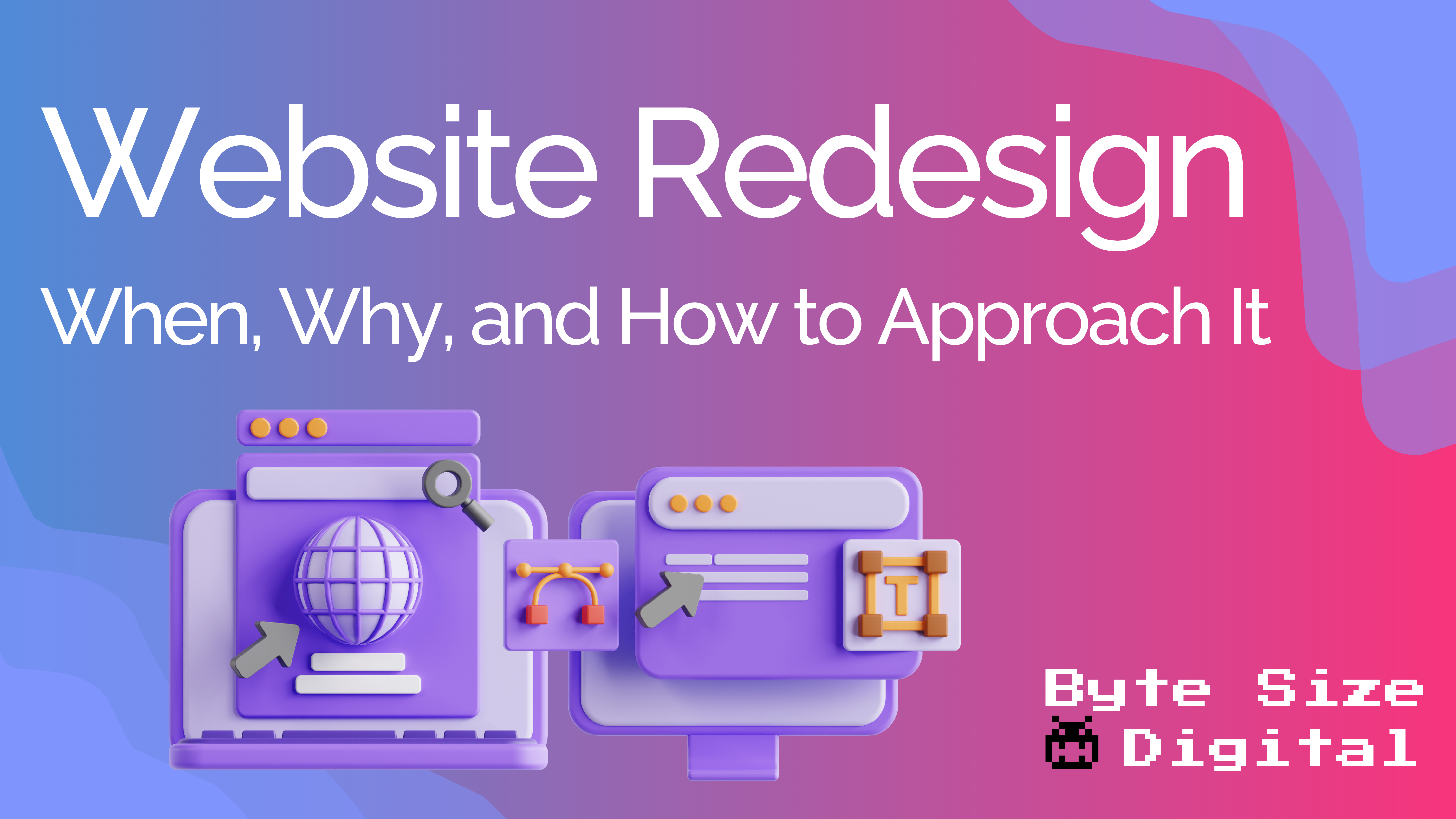We are in the digital age, which means a strong online presence is essential for any business or organization. Your website serves as the digital storefront, the first impression you make on potential customers or clients. But how do you know when it’s time to give your website a fresh look? In this article, we’ll explore the signs that indicate a website needs a redesign, along with best practices for executing a successful redesign.
Signs Your Website Needs a Redesign
- Outdated Design: If your website looks like it belongs to a bygone era, it’s time for a change. An outdated design can undermine your credibility and fail to capture the attention of modern users.
- Poor User Experience (UX): A confusing navigation structure, slow loading times, and an unresponsive layout can frustrate visitors and drive them away. If users can’t easily find what they’re looking for or the website isn’t mobile-friendly, it’s a clear sign for a redesign.
- Low Conversion Rates: If your website isn’t converting visitors into customers or leads, it’s not serving its purpose. A redesign can help optimize your site for better conversions through improved calls-to-action (CTAs), landing pages, and more.
- Changing Brand Identity: If your brand has undergone a significant transformation – such as a new logo, color scheme, or messaging – your website should reflect these changes to maintain consistency and reinforce your brand image.
- Technological Obsolescence: If your website relies on outdated technologies, it might not function optimally on modern devices and browsers. A redesign can ensure compatibility and enhance performance.
- Competitive Lag: If your competitors have sleeker, more user-friendly websites, you could be losing potential customers who opt for a more polished online experience elsewhere.
Why Redesign Matters
A website redesign is not just about aesthetics; it’s about creating a better user experience that aligns with your business goals. Here’s why it matters:
- Improved User Experience: A well-designed website enhances user satisfaction, keeps them engaged, and encourages them to explore your offerings.
- Enhanced Credibility: A professional, modern website establishes trust and credibility. A poorly designed website can make visitors question the legitimacy of your business.
- Optimized Performance: A redesign allows you to optimize your website’s performance, ensuring faster loading times and smoother navigation.
- Better SEO: A new design can incorporate current SEO best practices, making it easier for search engines to index your content and rank your site higher in search results.
- Mobile Responsiveness: With the increasing use of mobile devices, a responsive design is crucial. A redesign can ensure that your website looks and functions well across various screen sizes.
Approaching a Successful Redesign
When it comes to a website redesign, we at Byte Size believe in the notion of leaving it to the professionals. It is what we do after all and we do it well. However regardless of if you are doing it yourself or hiring a web developer these 9 steps will help you have a successful redesign.
- Set Clear Goals: Identify the objectives of your redesign – whether it’s improving user engagement, increasing conversions, or aligning with a new brand identity. Starting with why you are redesigning will help ensure your new site hits the mark.
- Understand Your Audience: Research your target audience’s preferences, behaviors, and needs to tailor your redesign to their expectations. Need help understanding your audience, check out our intro to marketing video which dives into identifying your ideal client. Available here!
- Content Audit: Evaluate your existing content. Keep what’s valuable, update outdated information, and consider adding new content to meet current demands. This is also a great time to make sure your website language aligns with your branding voice. A copywriter or even ChatGPT can help with a content refresh.
- User-Centric Design: Focus on user experience. Design intuitive navigation, prioritize important content, and create a visually pleasing layout. Allow your content to lead your design. It is easy to get wrapped up in having a pretty website, but the truth is if the site is not converting page views into clicks then it is a waste of time. Centering on user experience will help better navigate potential clients through your site.
- Responsive Design: Ensure your new design is responsive, adapting seamlessly to different devices and screen sizes such as mobile and tablets.
- SEO Integration: Incorporate SEO best practices during the redesign to maintain or improve your search engine rankings. This will include using keywords throughout your content, including in your meta data and image tags, as well as implementing 301 redirects where appropriate.
- Test and Iterate: Before launching, conduct usability testing to identify any issues and gather feedback from users. Use this feedback to refine your design.
- Migration Plan: If your redesign involves changing URLs or restructuring your website, create a meticulous migration plan to avoid broken links and loss of traffic.
- Backup and Launch: Always backup your current website before launching the new one. Double-check all elements to ensure a smooth transition.
A website redesign is a strategic investment that can breathe new life into your online presence, drive better user engagement, and ultimately lead to increased conversions. By recognizing the signs that your website is due for a refresh and following these steps, you can ensure that your redesign is successful and contributes positively to your overall business goals. Remember, a well-designed website is a powerful tool that can set you apart in the digital landscape and leave a lasting impression on your audience. Ready to revamp your website, reach out today and let’s get the process started!


